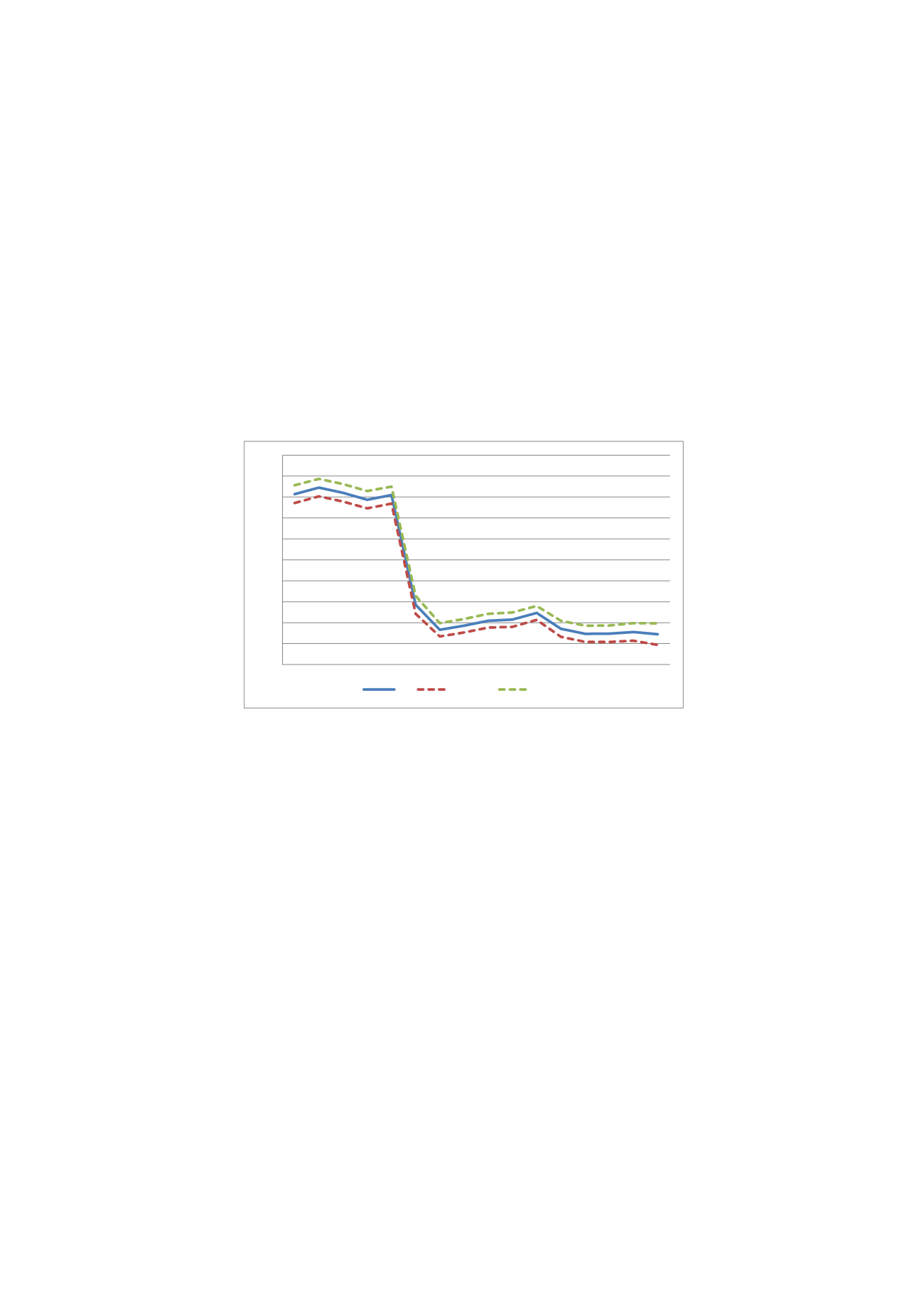
16
The estimates of
from the following regression model
.
(2)
are provided in
Here
ia
D
is one (zero else) if individual
i
enters an
occupational pension at age
a
. From this figure we can clearly see that the probability of
entering early retirement (occupational pension) at the ages 55-59 increases by 60
percentage points on average, or an increase of around 600 percent. The variation in
labor supply due to the 1992 Defense Bill is thus what we expected.
Figure 5: The effect on occupational pension take-up; interaction term in a difference-
in-difference-specification; other variables include dummy for military and birth year
1938-1939
Note: For cohort 1931, ages 55-58, and cohort 1932, age 55-57, the fractions are estimated with the value in 1990
(data on pension incomes starts in 1990).
Since the number of days is a count variable, it is restricted to be positive and it is also
right-skewed. The mean is thus restricted to be positive, and for this reason we use the
canonical link function for a Poisson regression model in our main specification when
analyzing the effects on health. In the following equation,
denotes days in
inpatient care of individual i at age a. The implication is that we estimate log linear
models, i.e.:
(
|
)
.
(4)
-0.2
-0.1
0
0.1
0.2
0.3
0.4
0.5
0.6
0.7
0.8
55 56 57 58 59 60 61 62 63 64 65 66 67 68 69 70
b
b-2*se
b+2*se


